4GHz CPU Battle: Ryzen 3900X vs. 3700X vs. Core i9-9900K - welchtharme
IPC stands for "instructions per Hz" and it dismiss be a good indicator of a central processing unit's architecture efficiency. Traditionally Intel Coffee Lake CPUs have offered high IPC linked with a high operating frequence and that's the best combination for maximum performance. Although AMD is still trailing when information technology comes to frequency, they appear to have closed in and possibly exceeded Intel's IPC carrying into action with the fractional generation Ryzen update.
To see how much headway AMD's made Here, we're going to neutralize arsenic many a variables as we can, while besides safekeeping things as vivid as possible.
The first and most obvious step is to remove core frequency from the equation and to ut this we've fast all CPU cores at 4 GHz. Any type of boost technology has been disabled, meaning the cores cannot go on past 4 GHz and all cores are clocked at 4 GHz. So for the Ryzen 9 3900X we've disabled ii cores in each chiplet, taking it from an 12-core part down to an 8-core role. All CPUs tested will have 8 cores active, but where the 3700X has them bushed a single die, the 3900X spreads the cores across two dies (two 4-core chiplets).

The 3rd-gen Ryzen CPUs have been time-tested on the GB X570 Aorus Xtreme using the AGESA 1.0.0.3AB BIOS revision, 1st and 2nd-gen Ryzen have been tested on the Asus ROG Crosshair 7 Hero, and the Coffee Lake CPUs happening the Gigabyte Z390 Aorus Radical. Complete configurations old the comparable G.Skill FlareX DDR4-3200 memory using the xtreme memory profile and the same MSI GTX 2080 Te graphics add-in.
A small disavowal we care to add for this kind of article: we'ray testing purely for the science of it and this is not purchasing advice.
The Coffee Lake CPUs certainly have a clock speed advantage out of the box, but that doesn't needfully make them the best choice. For real-world performance please refer to our Ryzen 9 3900X, 3700X and R5 3600 reviews.
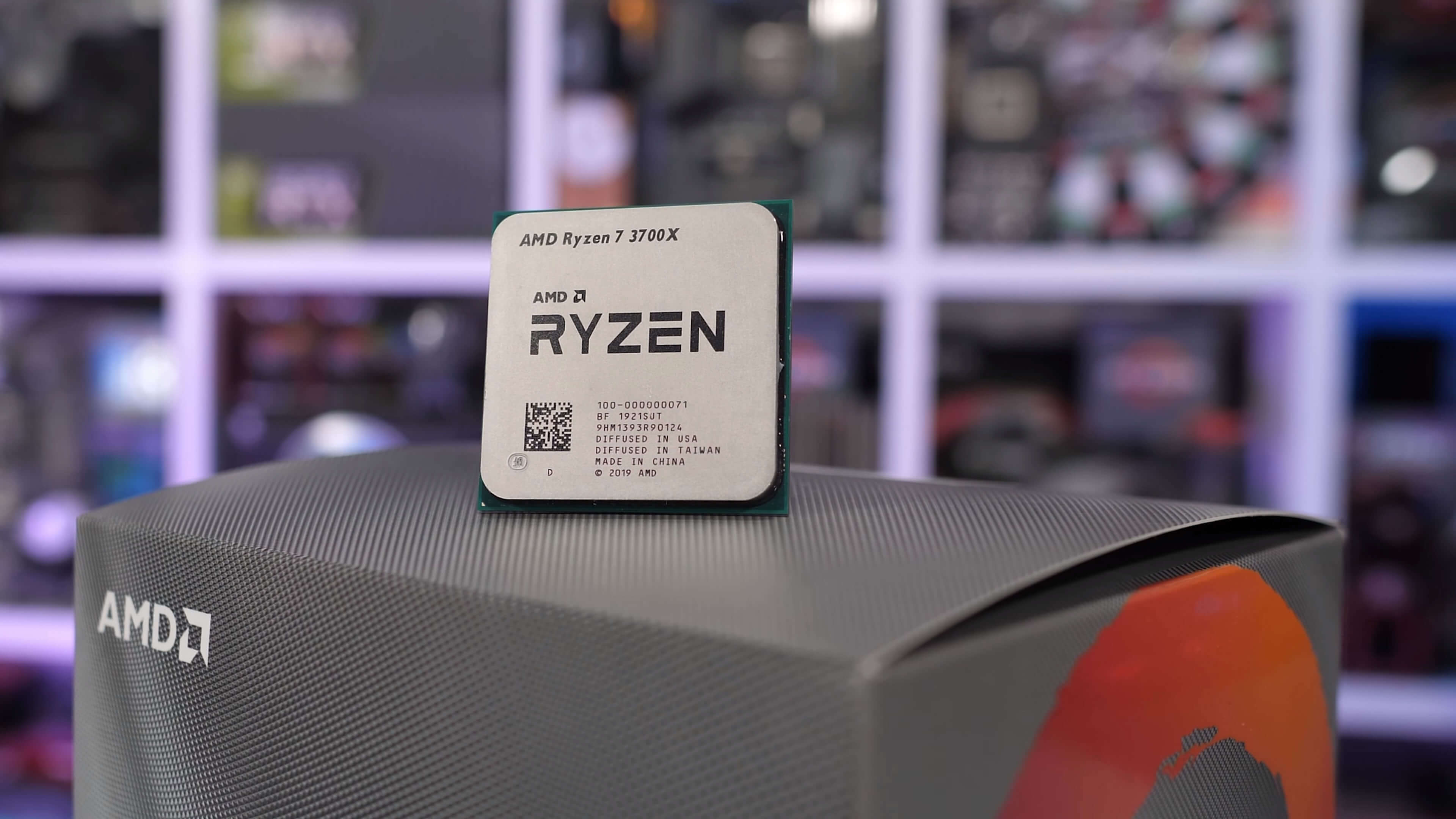
Application Benchmarks
We already get it on Ryzen tends to dominate in workstation tasks even with a clock speed disadvantage, merely there's Sir Thomas More to learn almost these numbers. In Cinebench R20's multi-core score the 3900X and 3700X provided just about the same performance, making them around 14% faster than the 9900K when matched clock-for-clock. Furthermore, they were 18% faster than the previous-gen 2700X. That's a significant improvement in IPC carrying out.
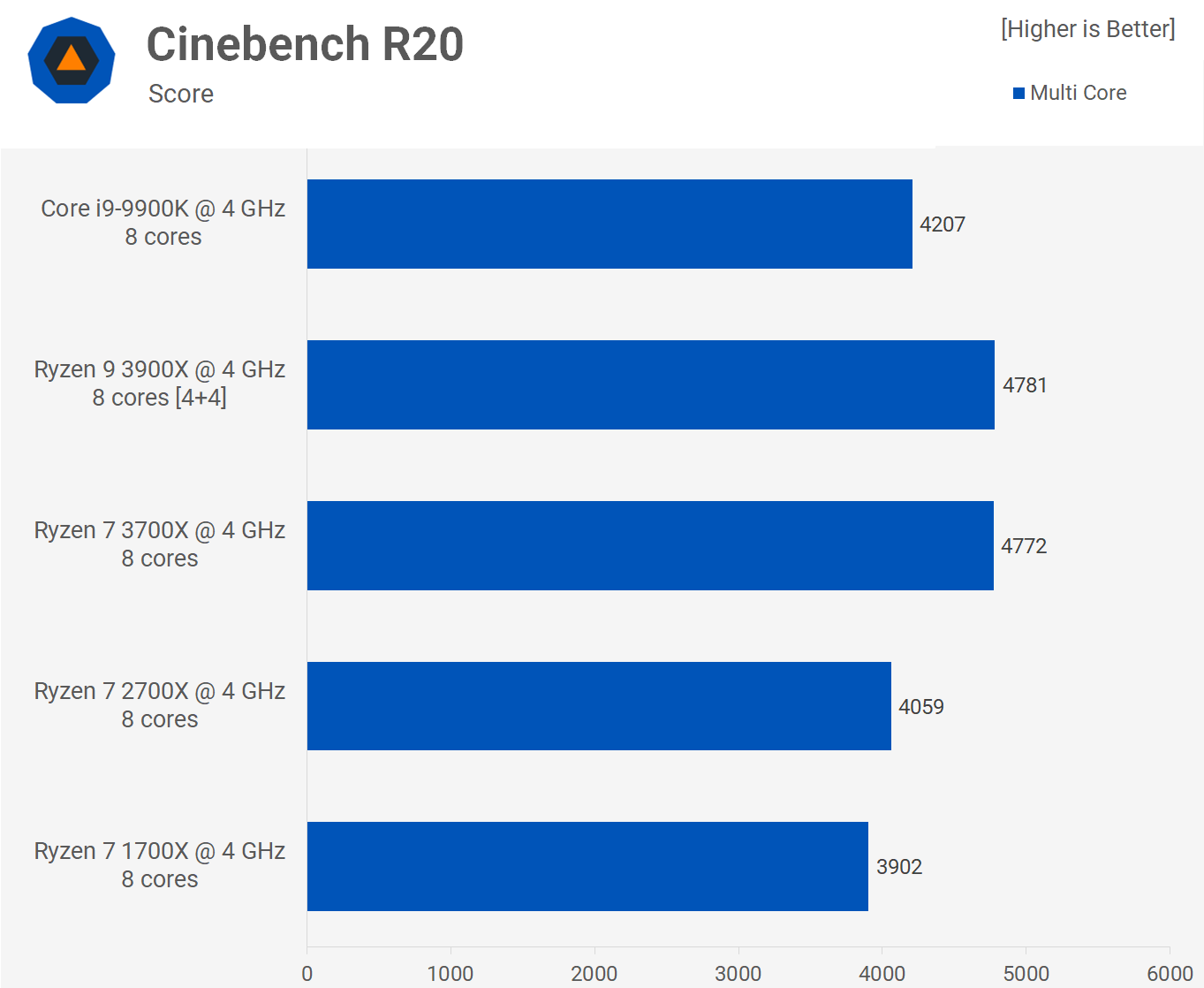
Examination single core performance sees a 13% performance lift up for 3rd-gen Ryzen parts over the 2700X. They were also 9% faster than the 9900K, so beautiful good stuff from these new processors.
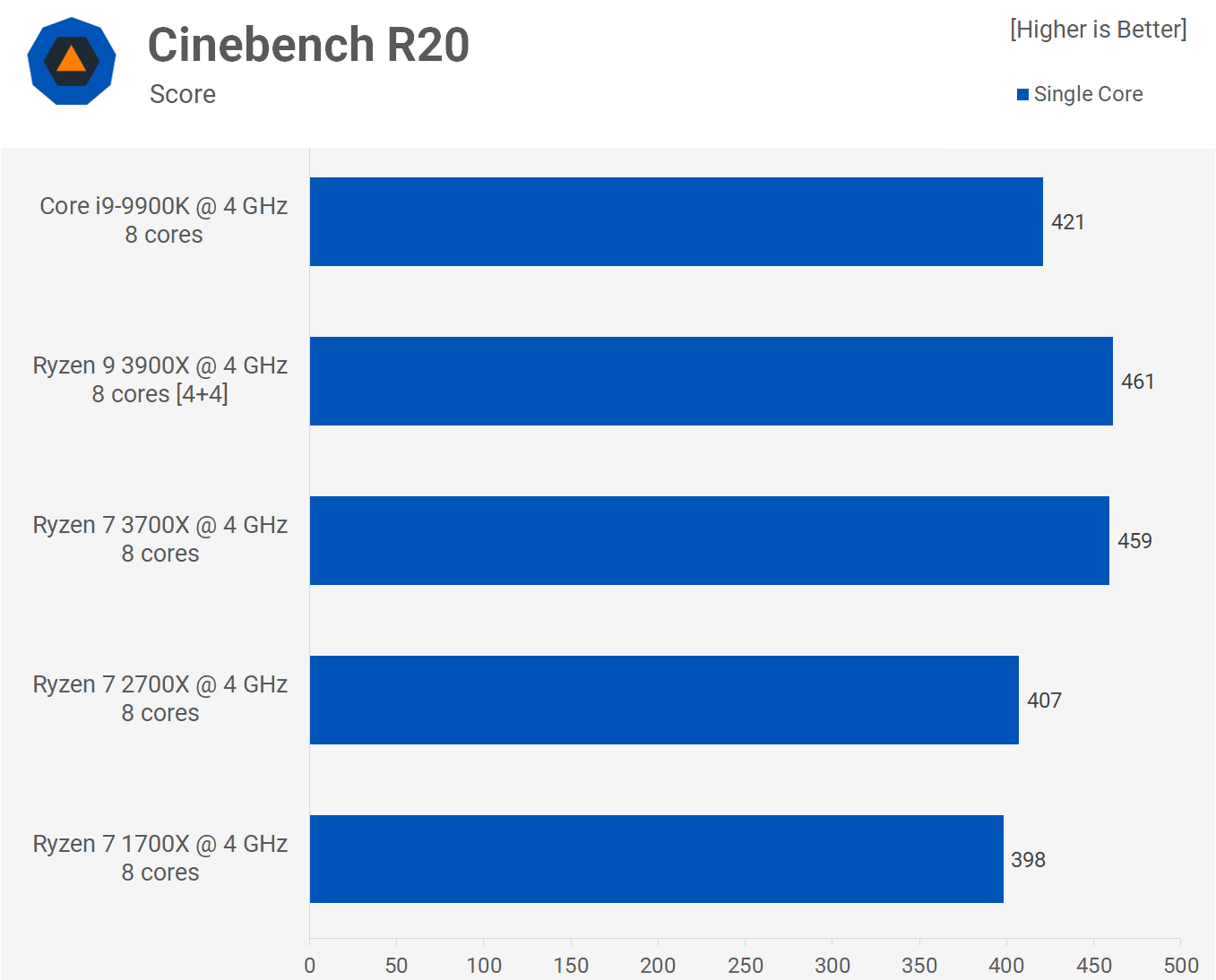
The dual chiplet design of the 3900X improved performance in the V-Shaft of light bench mark by 2% over the 3700X, not a substantial deviation but it was consistently faster in that test. This meant when matched at the identical time speed, the 3900X was 6% faster than Intel's i9-9900K and 13% faster than the 2700X.

Using the Corona benchmark, this time the 3900X was 3% faster than the 3700X. The 3900X was also 5% quicker than the 9900K and 16% faster than the 2700X. Now let's see how things look in a few games.

Gaming Benchmarks
The first lame we'atomic number 75 checking out is Battlefield V. Despite a hefty reduction in time speed, the Burden i9-9900K still manages to take the top spot. The 1% low execution was very impressive and here the 9900K was 9% faster than 3rd-gen Ryzen processors.
When looking at the average frame plac we realize that the 3700X was 8% faster than the 2700X, while the 3900X was 13% faster. This means that even when matched at the same clock speed with the same number of cores, the 3900X is still 5% faster than the 3700X, very interesting.
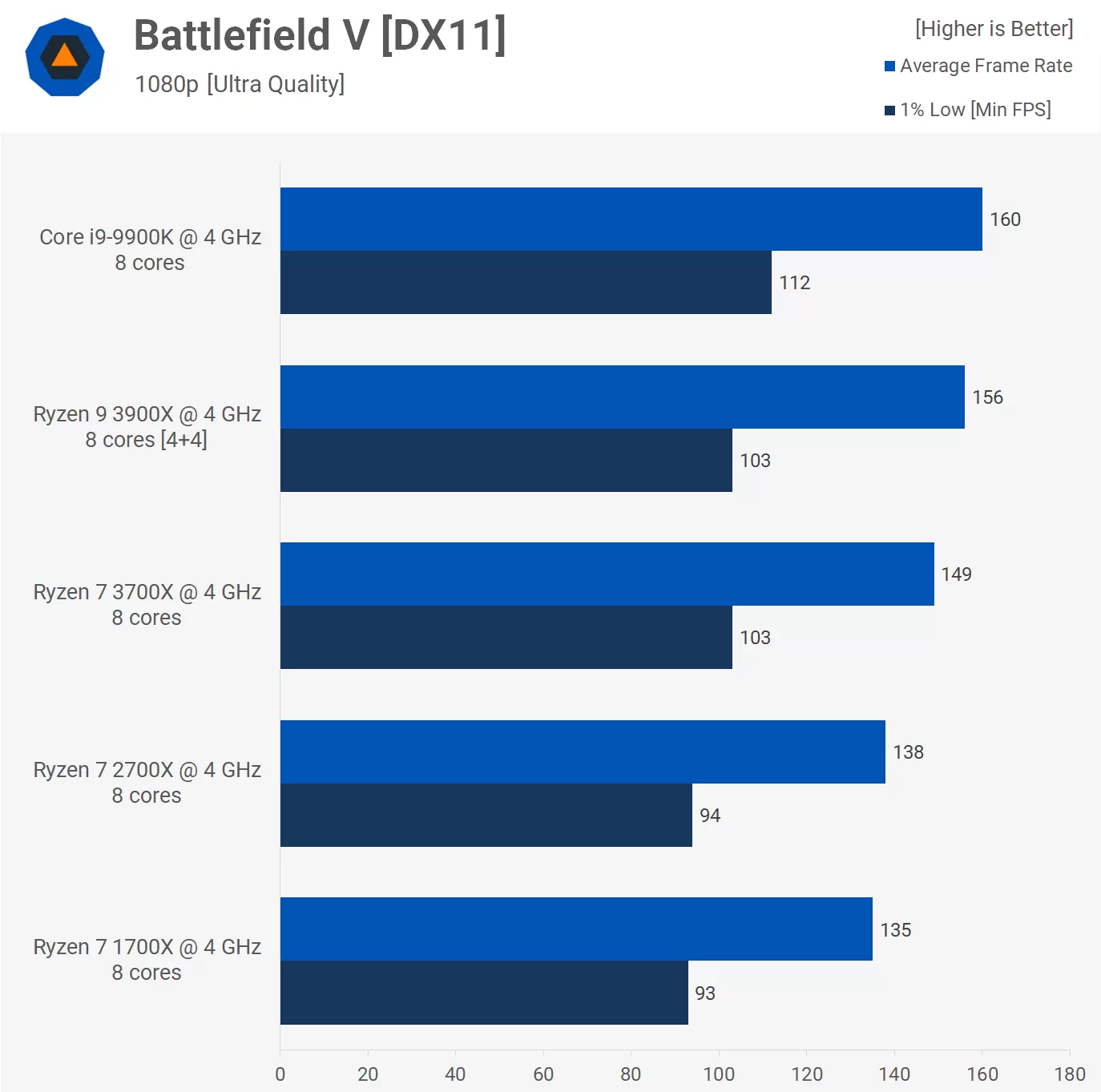
The 9900K also takes the first place in Far Cry New Dawn, trouncing the 3900X by a 5% margin for the average material body rate, and 10% for the 1% baritone result. This is while running at a frequency lower than out of the box.
That's not to say AMD hasn't taken a noteworthy jump: the 3900X was a full 20% faster than the 2700X, piece the 3700X offered a 16% performance melioration.

Even at 1080p with an RTX 2080 Ti, Totality War: Three Kingdoms is mostly GPU bound. We can still see many improvement to the 1% low-growing results and once again Intel comes out happening upper.

World War Z has received an update that dramatically improves performance. This update sees Ryzen processors execute significantly better and now the 3900X is able to roughly match the 9900K in our IPC mental test.
The dual chiplet 3900X was again a bit faster than the single chiplet 3700X, offering a 4% bump for the average skeleton rate. The 3900X was 14% faster than the 2700X, spell the 3700X was 9% faster.

Another crippled we decided to check out was Humankind of Tanks. This title was recently redesigned to take ameliorate advantage of multi-core CPUs. When matched at the same time speed the 3900X provided marginally better 1% low performance than the 9900K, spell average chassis rates were just about the Lapp.
The 3900X was faster than the 3700X by 4% and a full 13% faster than the 2700X.
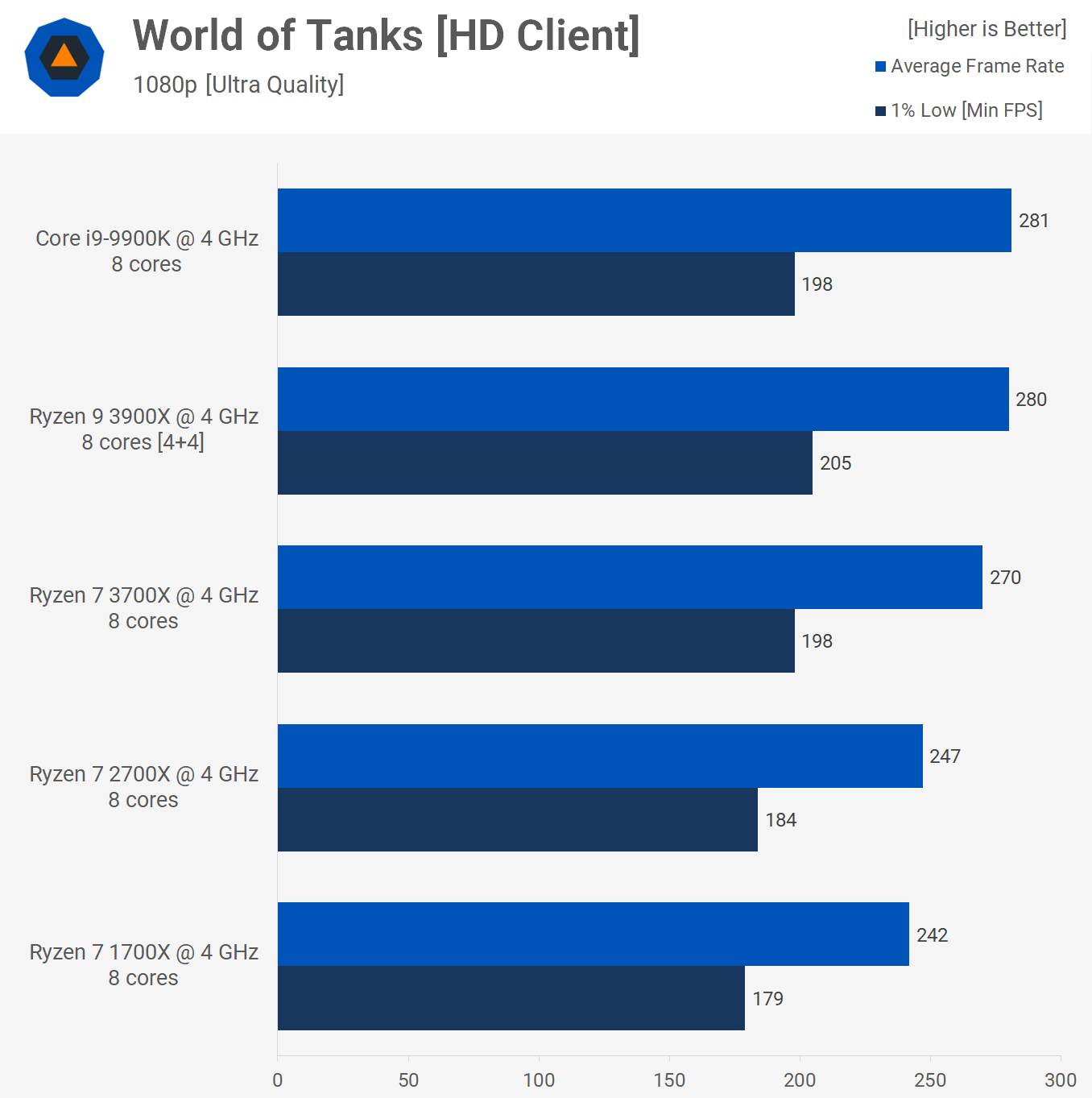
The last unfit we're looking is Rainbow Six Beleaguering. Even though this title is mostly GPU bound, we see the 9900K performing a acceptable bit faster when looking at the average frame rate. 1% low performance was closer across the board.

Memory and More
Something we ascertained when first testing the Ryzen 7 3700X was the much lower-than-expected write remembering bandwidth. Subsequently discussing this with AMD, they explained they made a compromise here as client workloads do very little writing. Rather than using this space to improve something that isn't needed, they invested the silicon real estate in Thomas More beneficial ways to achieve performance gains.
The end result being that the Core Complex Die to IO Die link for indication storage is 32 bytes wide, but it's alone 16 bytes wide for writing, and this is why the extremum spell bandwidth is efficaciously chime in half. Nevertheless, because the 3900X has cardinal CCDs it features two 16 bytes wide lanes for writing and this brings the peak bandwidth congest to around 50 GB/s.
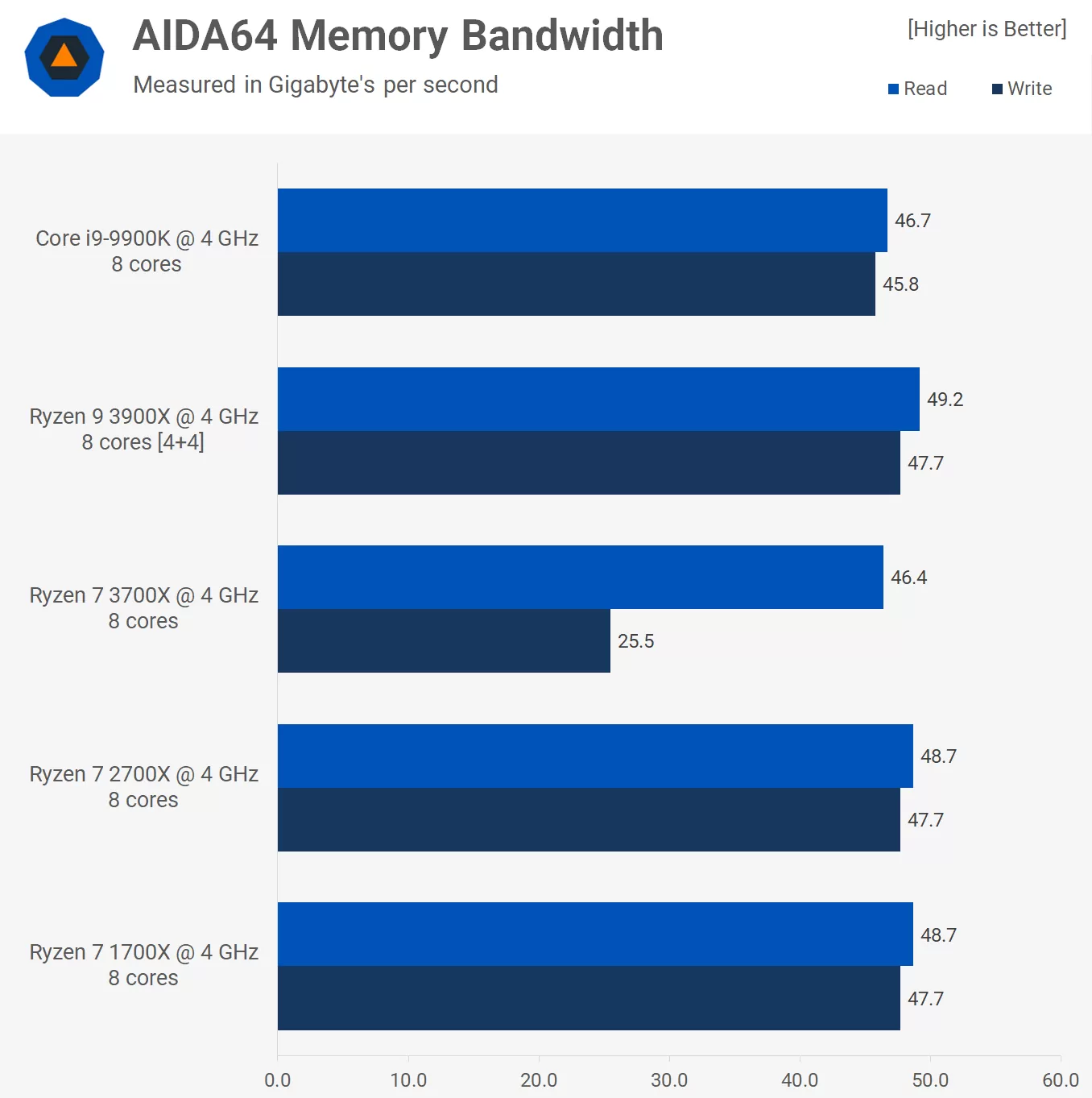
Moving along to hive up bandwidth we reckon the 3700X and 3900X are virtually identical and both offer substantial gains for L1, L2 and L3 bandwidth over the 2nd-gen 2700X. L3 cache bandwidth has been increased anywhere from around 40 to 50% with 3rd-gen Ryzen.
We also see a 30% improvement in L2 bandwidth and an almost 100% increase in L1 bandwidth. That's an incredible performance uplift and it goes a long way in explaining why we saw 100% performance gains in applications such as WinRAR.

As for memory latency, not much has changed. If anything we've seen an increase in memory response time from 2nd-gen Ryzen and we see this when looking for at DRAM and L3 cache response time. The Drachma latency is 50% high than that of the Center i9-9900K and this bequeath be part responsible for the difference in play execution simply seen.
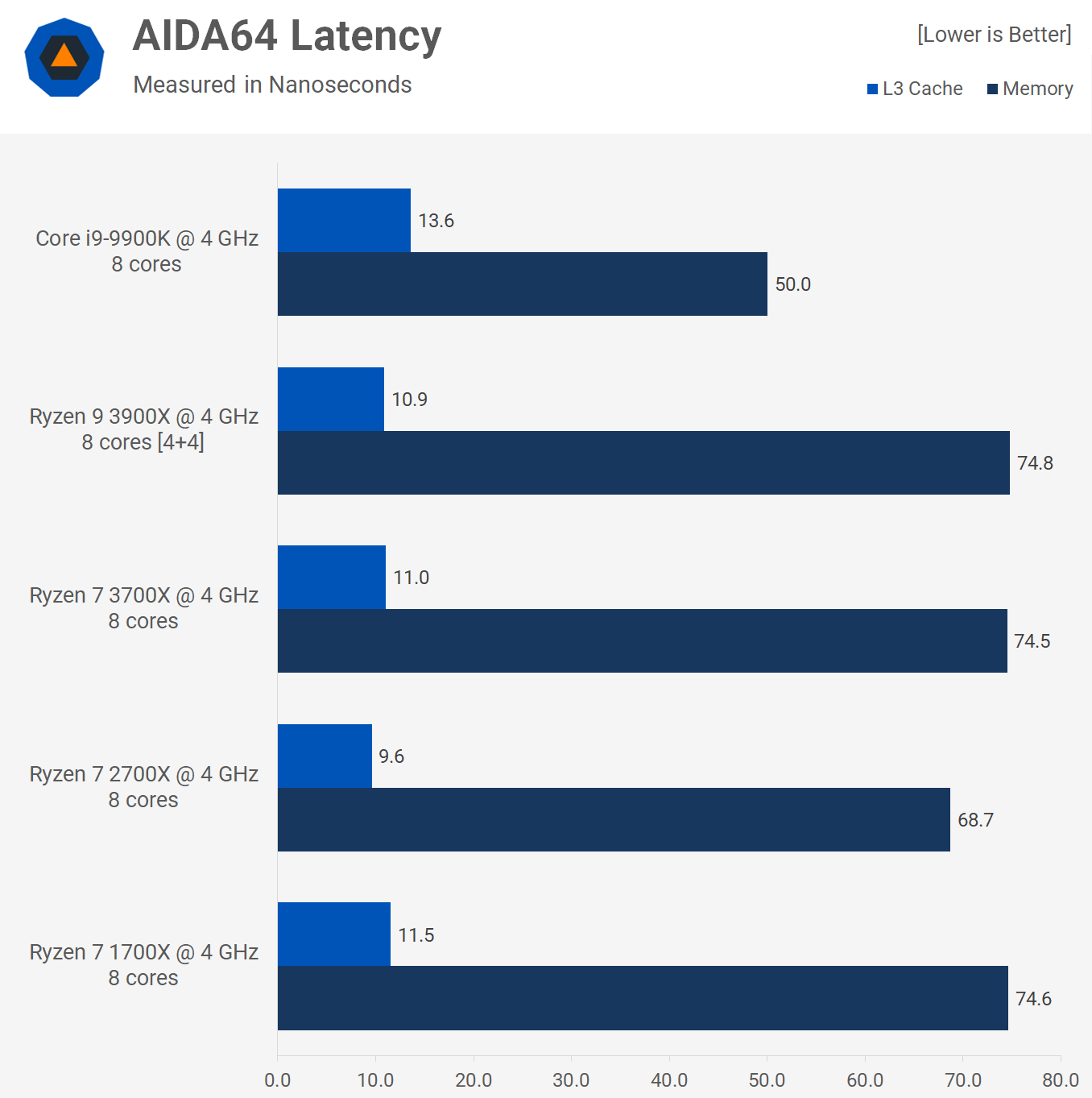
Some other reason for the slightly lower gaming execution is pith latency. When compared to 2nd-gen Ryzen, the newer architecture is a massive improvement. For the best matched cores we're seeing a 30% reduction in latency and at least a 26% reduction for the worst matched cores. This means best vitrine the heart and soul to core latency is actually reduced by 35% for the 3rd-gen Ryzen central processing unit when compared to Intel's Coffee Lake computer architecture. Problem is, worst case latency is 54% higher, and this ISN't very good, especially when playing latency-sensitive games.
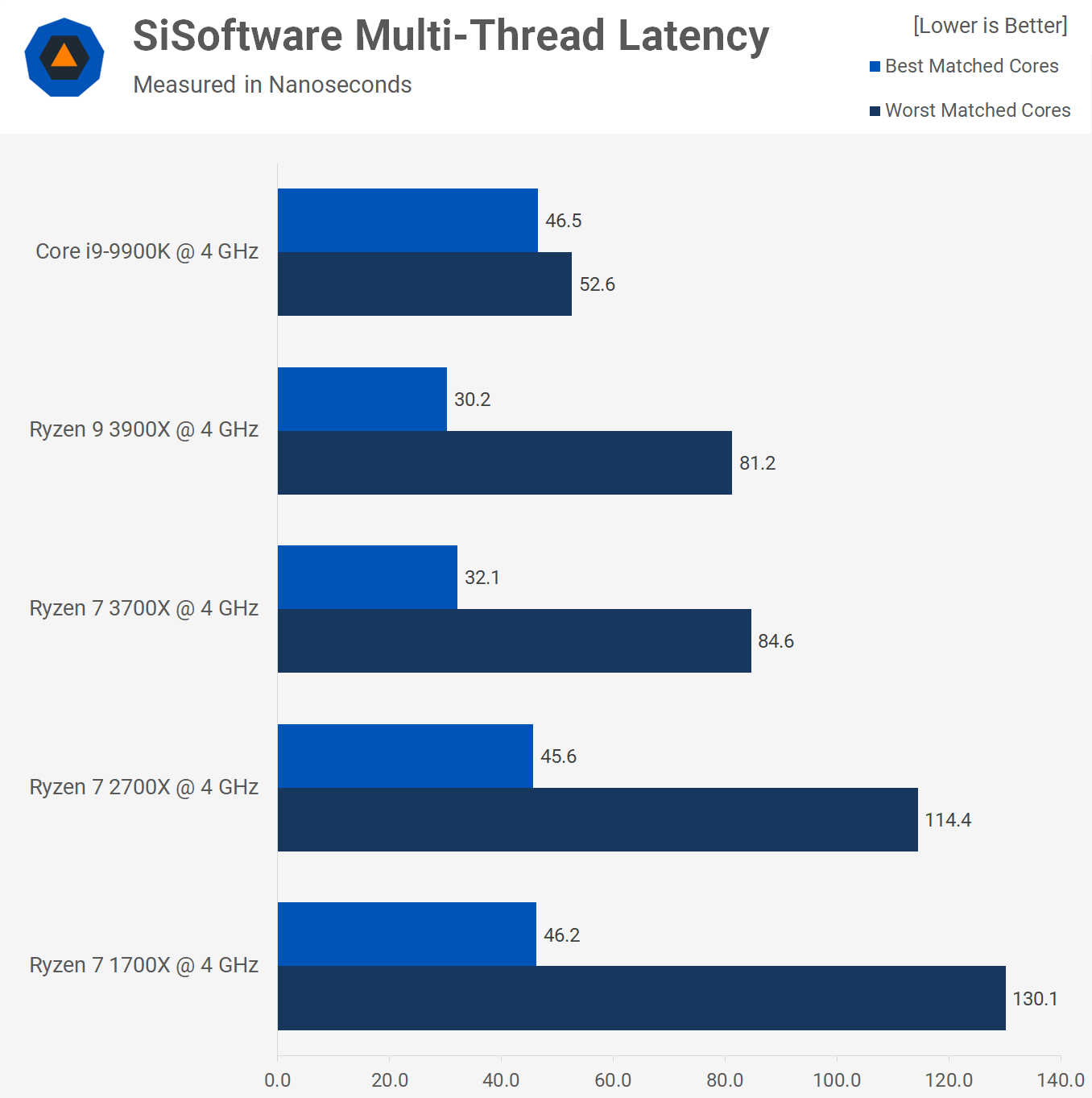
Polish off: Generational Upgrades
AMD has taken a bulky step forward with 3rd-gen Ryzen. We knew that from the moment we first tested the 3700X and 3900X and we were expecting good things after AMD claimed a 15% uptick in IPC performance prior to launch.
Our proceeds is they weren't exaggerating: with cores and clock speeds at parity the 3900X provided an 18% advance concluded the 2700X in Cinebench's multi-core test and 13% for the bingle-core test. We also saw a 13% melioration in V-Shaft of light and 16% in Corona.

You tin can't really use games for measuring IPC gains but they're still stimulating to take for clock-for-clock comparisons. Single obvious go forth with games is that they're not always C.P.U. bound and even when they are, the level to which they are CPU bound privy vary.
E.g., we byword minor performance gains in Rainbow Sise Siege and Total State of war: Three Kingdoms, but in these two titles we were heavily GPU bound. The 3900X was ~13-14% faster than the 2700X when testing with Worldwide of Tanks, Human race War Z and Field of battle V and an even many significant 20% operation advance in Army for the Liberation of Rwanda Cry New Dawn.
Eventually we may look into adding HEDT platforms to this comparison, in the meantime you force out feel out our reviews of Intel Cascade Lake-X and 3rd-gen Threadripper.
Shopping Shortcuts:
- AMD Ryzen 7 3700X on Amazon
- AMD Ryzen 9 3900X on Amazon
- Intel Sum i9-9900K connected Amazon
- AMD Ryzen 5 3600X on Amazon
- AMD Ryzen 5 3600 happening Amazon
- Intel Meat i5-9600K on Amazon
- Intel Core i5-9400F connected Amazon
- AMD Ryzen 5 2600X on Amazon
- GeForce RTX 2070 Super on Amazon
- GeForce RTX 2060 First-rate connected Amazon River
This article was originally published in July 15, 2019. Information technology's even as relevant today as it was then, so we've bumped it Eastern Samoa part of our #ThrowbackThursday initiative.
Source: https://www.techspot.com/article/1876-4ghz-ryzen-3rd-gen-vs-core-i9/
Posted by: welchtharme.blogspot.com


0 Response to "4GHz CPU Battle: Ryzen 3900X vs. 3700X vs. Core i9-9900K - welchtharme"
Post a Comment